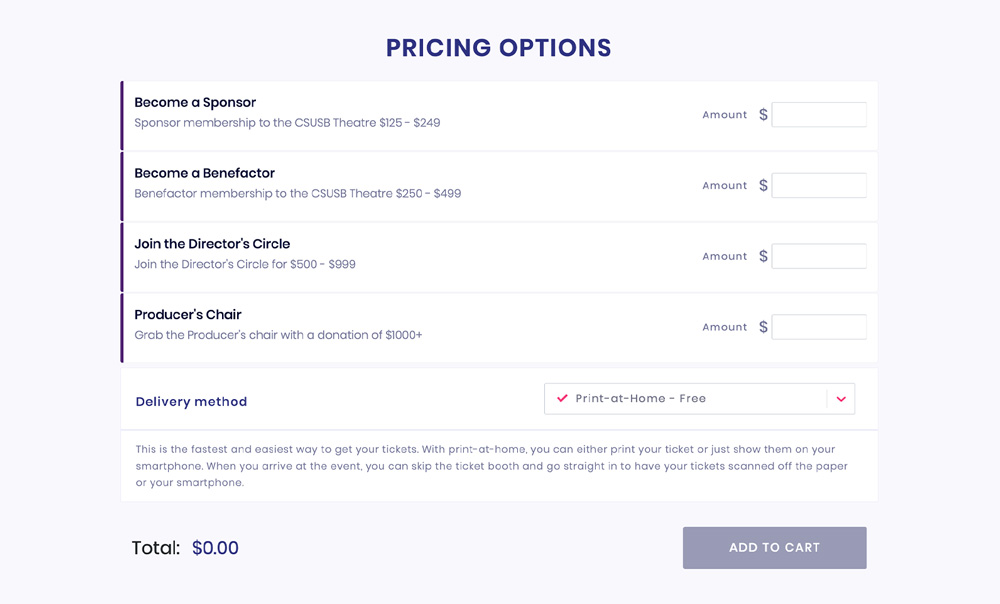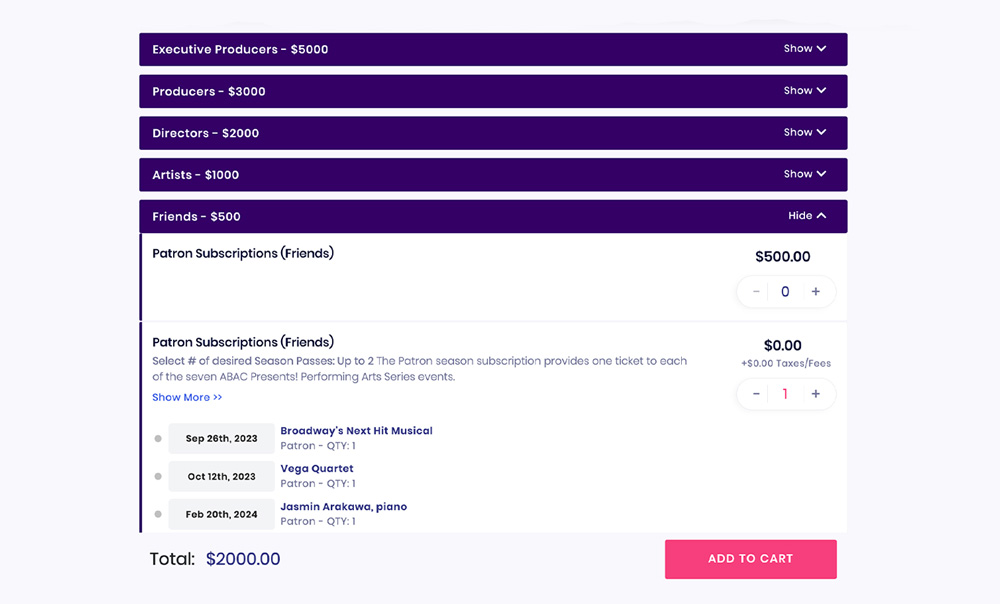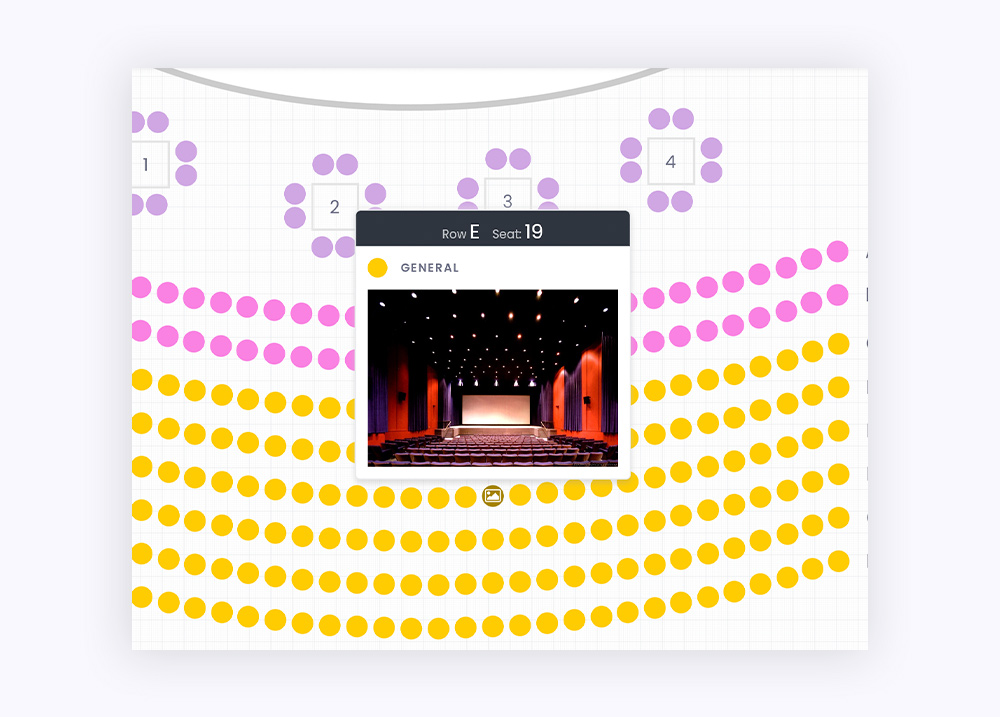How to Profit From Free Events: Creative Strategies to Monetize Your Gatherings
Hosting a free event can seem counterintuitive to making money. After all, if there's no entry fee, where's the revenue? But, don't be fooled; free events can be incredibly profitable if executed correctly.
They attract a larger audience and can be a goldmine of opportunities to generate income in ways that ticketed events might not.
Here's a deep dive into maximizing profit from your free event.
1. Sponsorships
When your event garners a large audience, it becomes a platform that businesses might want to leverage. Approach potential sponsors who see value in getting exposure at your event.
- Tiered Sponsorships: Offer various sponsorship packages ranging from title sponsors to co-sponsors, giving businesses options based on their budget.
- Custom Collaborations: Allow sponsors to host workshops, product demos, or exclusive lounges for attendees.
2. Concessions and Food Stalls
Ensuring attendees are well-fed and refreshed is vital, especially during extended events. A strategic approach to concessions not only caters to these needs but can also become a significant revenue stream.
Here's how to capitalize on these essentials:
- Food and Drink Sales: Whether partnering with beloved local vendors or hosting your own stalls, offering a range of snacks, meals, and beverages can significantly boost your event's profitability.
- Themed Concessions: Elevate the culinary experience by aligning food and drink options with your event's theme. This tailored approach not only satisfies hunger and thirst but also enhances immersion, making the occasion all the more unforgettable.

3. Merchandise
Merchandising is not only an excellent avenue for revenue generation but also an impactful method of brand promotion. When attendees take home a tangible piece of the event, it serves as both a memento and a marketing tool.
Here's how to make the most of merchandise opportunities:
- Apparel: Fashionable items like t-shirts, caps, and bags, emblazoned with the event's distinctive logo or memorable catchphrase, not only serve as wearable mementos but also as walking advertisements.
- Customized Souvenirs: Consider offering a range of keepsakes, such as mugs, keychains, and posters. When these items truly capture the spirit of the event, they're more likely to find a treasured spot in attendees' homes.
- Limited-Edition Items: Introduce limited-run merchandise that's exclusively available during the event. This creates a sense of urgency and exclusivity, encouraging attendees to make a purchase.
- Collaborations: Partner with local artists or influencers to design unique merchandise pieces. This can elevate the perceived value of items and tap into new audiences.
- Digital Goods: In our increasingly digital age, think beyond the physical. Offer downloadable content like e-books, digital art, or exclusive online access related to your event.
4. Premium Seating or VIP Access
The allure of exclusivity cannot be underestimated, especially when it comes to events. By offering a premium experience, organizers can tap into attendees' desires for comfort, convenience, and a touch of luxury. Even if the core event is accessible to all, there's always a segment willing to pay a little extra for an enhanced experience.
Here's how to craft and capitalize on such premium offerings:
- Reserved Seating: For events with performances, talks, or presentations, offer prime seating options for a fee. Attendees can secure the best views, ensuring they won't miss a moment of the main attractions.
- Exclusive Lounges: Develop plush lounges where attendees can relax away from the general crowd. Equip these areas with comfy seating, free refreshments, and perhaps even Wi-Fi access. Charging for entry into this sanctuary of comfort can add a substantial revenue stream.
- Early Access: Offer VIP ticket holders the privilege of entering the event ahead of the general public. This gives them first dibs on merchandise, seating, or any other amenities.
- Meet-and-Greets: If your event features celebrities, artists, or industry experts, consider organizing exclusive meet-and-greet sessions for an additional fee.
- Dedicated Entrances: To elevate the VIP experience further, provide dedicated entrances to avoid long queues and ensure swift, hassle-free entry.
- Special Merchandise: Offer limited-edition merchandise or goodies exclusive to VIP attendees as part of their package, amplifying the sense of exclusivity.
5. Workshops and Masterclasses
Diving deeper into the event's theme, workshops and masterclasses offer attendees the chance to gain specialized knowledge or skills, making them valuable additions that many are willing to pay for. These sessions not only amplify the event experience but also create additional revenue streams.
Here's how to effectively implement and monetize these offerings:
- Expert Sessions: Collaborate with renowned figures in the relevant industry to conduct masterclasses or intensive workshops. Their expertise and reputation can draw a crowd willing to pay for exclusive insights.
- Interactive Experiences: Tie the workshop to the event's theme. For instance, at a food festival, cooking classes with renowned chefs can be a hit. Likewise, an art fair could benefit from photography or painting lessons.
- Premium Access: Offer general sessions for all but consider having premium tiers. These could include added benefits like one-on-one sessions, extended workshop durations, or even exclusive materials.
- Certification: For more intensive workshops, provide attendees with a certificate of completion. This adds value and can be especially appealing for professional or educational events.
- Virtual Extensions: With the growing popularity of online learning, consider offering virtual masterclasses. This way, even those who couldn't attend in person can participate and contribute to your revenue.

6. Affiliate Sales and Partnerships
Affiliate sales and partnerships can greatly enhance the overall experience of an event while also opening up avenues for monetization.
By aligning with businesses that resonate with the event's theme and audience, organizers can offer value to both attendees and collaborators. Here's how to leverage these collaborations for mutual benefit:
- Product Booths: Rent out spaces to businesses whose products or services align with the event's theme. This allows them to tap into a targeted audience while you earn from booth fees. Alternatively, strike a deal where you earn a percentage of their sales.
- Showcase Innovations: Offer a platform for budding entrepreneurs, startups, or inventors to display their innovations. Charge them a fee for the exposure they'll receive by introducing their products or ideas to your event's attendees.
- Brand Integration: Collaborate with brands for integrated experiences, where their products or services are woven into the event's fabric. This could be in the form of sponsored sessions, workshops, or interactive displays.
- Promotional Giveaways: Partner with brands to offer exclusive giveaways or samples to attendees. This can enhance the overall event experience while giving brands a unique promotional opportunity.
- Cross-Promotion: Engage in mutual promotional efforts with your partners. They can advertise their participation in your event on their platforms, driving their audience to your event, while you can highlight their presence or contribution to your attendees.
- Exclusive Deals: Encourage partners to offer event-exclusive deals or discounts to attendees. This creates an incentive for purchases, benefiting both the event organizer and the partner.
7. Donations
Incorporating donations into your event can not only help cover costs but also drive a sense of community and goodwill among attendees. When events have a cause or social initiative attached, many attendees often willingly contribute.
Here's how to seamlessly integrate donation opportunities, making it convenient and compelling for attendees to chip in:
- Visible Donation Stations: Strategically place donation boxes or stations in high-traffic areas, such as entrances, exits, or near main stages. Ensure they are well-marked with clear messaging about the cause or reason for the donation.
- Online Donations: In today's digital age, offering an online donation option is vital. This allows attendees to make quick and secure transactions via their smartphones. Make sure to promote the online donation link throughout the event.
- Interactive Donation Booths: Set up booths that educate attendees about the cause or initiative, using visuals or interactive displays. This can inspire more generous contributions by connecting donors emotionally to the cause.
- Suggested Donations: While any amount is appreciated, suggesting specific amounts (e.g., $5, $10, $20) can guide attendees and often results in more substantial donations.
- Incentives for Donors: Offer small tokens of appreciation for those who donate. This could be in the form of stickers, badges, or even special access to certain areas of the event.
- Live Donation Trackers: If feasible, display a live tracker highlighting the total donations collected. This visual representation can motivate attendees to contribute and help reach any set targets.
- Ambassadors or Volunteers: Engage enthusiastic individuals to educate attendees about the donation cause, personally encouraging them to contribute. Their passion can be infectious and drive more donations.
8. On-site Activities
Creating an immersive environment with a range of on-site activities not only enhances the attendee experience but can also serve as additional revenue streams. Engaging, fun, and interactive elements can keep attendees entertained for longer, encouraging them to spend more.
Here's how to curate an array of on-site activities that can both captivate and contribute to the event's profitability:
- Photo Booths: Establish themed photo booths that align with the event's essence. Charge for instant prints, digital copies, or fun props. Additionally, provide options for personalized backdrops or photo frames to commemorate the event.
- Games and Competitions: Introduce various games ranging from traditional carnival games to more modern arcade setups. Charge a nominal fee for participation. Ensure there are enticing prizes for winners, which could also be sponsored by partnering brands.
- Craft or DIY Stations: Set up areas where attendees can create something to take home – like custom t-shirts, personalized jewelry, or even simple crafts. Charge for materials or workshop access.
- Interactive Workshops: Offer mini-workshops or sessions on topics related to the event's theme. For example, at a music festival, you could have drumming circles or basic instrument lessons for a fee.
- Mystery Boxes: Sell boxes filled with surprise goodies related to the event. The allure of the unknown can be a big draw!
- Charging Stations: In today's digital age, offer paid charging stations for attendees' electronic devices. This small convenience can be a lifesaver for many and an added revenue stream for organizers.
- Virtual Reality or AR Experiences: If resources permit, set up VR or AR stations where attendees can immerse themselves in unique digital experiences for a fee.
- Meet & Greets: If there are celebrities, influencers, or experts present, offer exclusive paid meet-and-greet sessions for die-hard fans or enthusiasts.

9. Post-event Content Sales
Extending the event's lifespan through post-event content not only offers attendees a chance to relive their experiences but can also prove to be an untapped revenue avenue for organizers. By repackaging and distributing content produced during the event, you can generate additional income and maintain a buzz around your event brand.
Here’s a roadmap on how to monetize post-event content effectively:
- Event Recordings: Especially if your event had informative sessions, workshops, or standout performances, consider selling digital access to these recordings. Bundle them as packages or offer individual sessions to cater to diverse interests.
- Photographs: Professional photographs taken during the event can be a treasured keepsake for attendees. Offer an online gallery where attendees can view and purchase high-resolution versions. Additionally, consider creating a photo book or commemorative album for sale.
- Behind-the-Scenes Footage: Attendees often love to see what went on behind the curtains. Curate behind-the-scenes footage and offer it as exclusive content for purchase.
- Merchandise: If there's leftover merchandise from the event, sell it online post-event at discounted rates.
- Workshop Materials: If your event had workshops, consider selling the material or resources used, be it in digital format or physical kits.
- Digital Goodie Bag: Assemble a virtual goodie bag filled with exclusive content, discounts, or resources related to the event's theme, and offer it for sale or as an upsell with other purchases.
- Subscription Access: Create a subscription model offering access to not just this event’s content, but also archives of past events and exclusive previews of future events.
- Feedback and Reviews: As a bonus, as attendees engage with your post-event content, encourage them to leave reviews and feedback. This not only provides you with valuable insights but also creates a community feeling that can help in marketing future events.
10. Advertising Space
Taking advantage of every square inch of your event space can transform unused areas into profitable advertising opportunities. By providing a platform for other entities to promote themselves, you can monetize various aspects of your event's real estate. Here's how to harness advertising spaces effectively:
-
Stalls and Booths: Offer rental spaces to local entrepreneurs, artists, or craftsmen. This not only diversifies what's on offer for attendees but also brings in revenue from these stall rentals.
-
Digital Screens: Set up screens in high-footfall areas of the venue and rent out advertising slots. These dynamic ads can capture attention, making it an appealing option for businesses to promote their products or services.
-
Banner Spaces: Designate areas where sponsors or businesses can display their banners. These can be placed strategically to ensure maximum visibility.
-
Floor Graphics: Consider using the venue's floors as advertising space. Eye-catching graphics or brand logos can be placed in pathways or open areas.
-
Interactive Kiosks: Rent out spaces for businesses to set up interactive kiosks. These can be both promotional and experiential, offering attendees a hands-on experience with a product or service.
-
Sponsored Zones: Create specific zones or lounges sponsored by brands. These can be relaxation zones, charging stations, or even food courts, and they can carry the branding of the sponsor prominently.
In Conclusion
The adage "You have to spend money to make money" takes on a new meaning when considering free events. By eliminating the initial financial barrier for attendees, you can capitalize on the larger crowd with the methods mentioned above.
So, the next time you're brainstorming for your free event, consider integrating a few of these strategies to ensure a memorable experience for your attendees and a profitable one for you.






